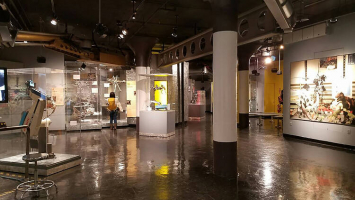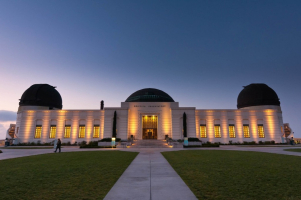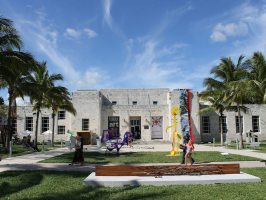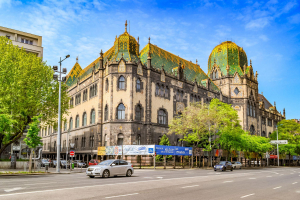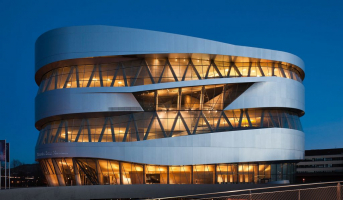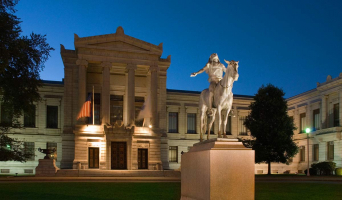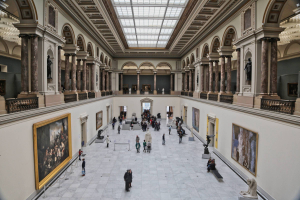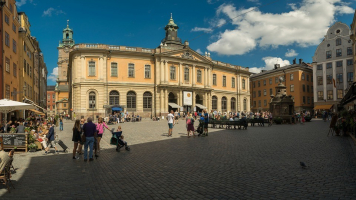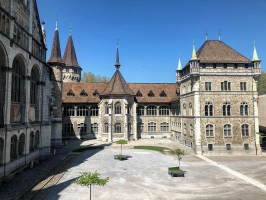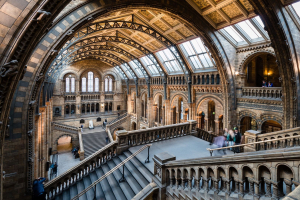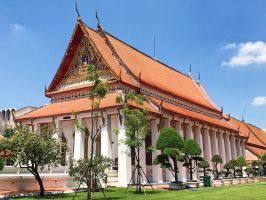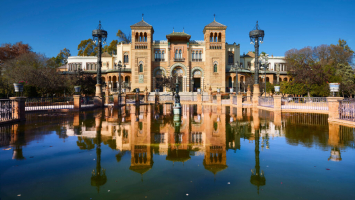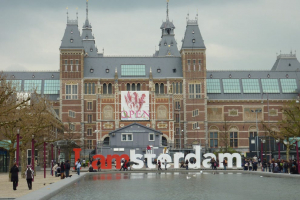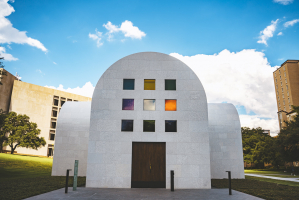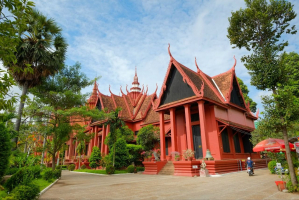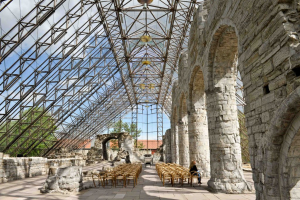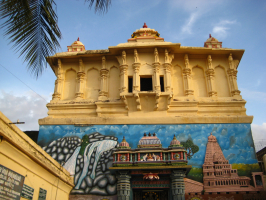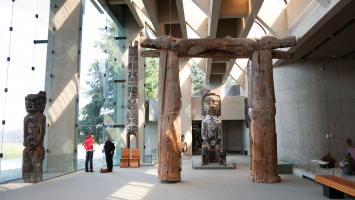Top 12 Best Museums to Visit in London
If you know where to look, you may find a thousand years of world history on the streets of the United Kingdom's capital. Museums and galleries are popular ... read more...destinations among London's many attractions, and they are a great delight for museum and gallery buffs. Toplist has prepared a list of London's best museums. Continue reading to learn more.
-
The British Museum is a London-based historical institution dedicated to human history and civilization. Its enduring collection, which numbers about eight million books and spans all continents, is the largest and most comprehensive in existence, describing and chronicling the history of human society from its beginnings to the present.
Since its founding in 1753, the British Museum has taken pleasure in being unmolested. The British Museum is home to more than 7 million items, and seeing them all would probably take a week. The collection of Egyptian and Greek antiquities is without a doubt among the world's finest and most well-known.
On January 15, 1759, the British Museum opened to the general public. It was initially housed at Montagu Mansion, a seventeenth-century house in Bloomsbury, on the site of today's fabrication. 'All studious and inquisitive Persons' were granted free passage. The Museum has stayed open since then, with the exception of two World Wars, gradually increasing its opening hours and growing from 5,000 visitors per year to today's 6 million.
Location: Great Russell Street, London, England WC1B 3DG
Website: britishmuseum.org
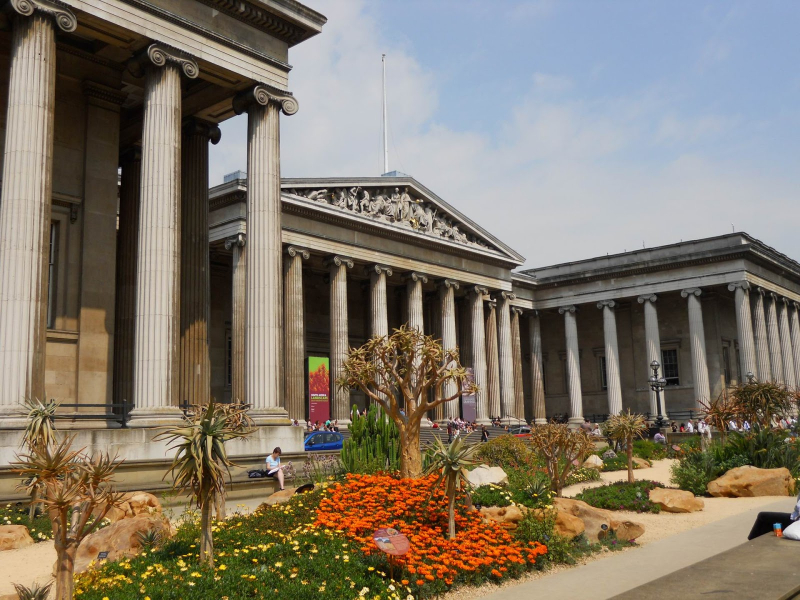
British Museum 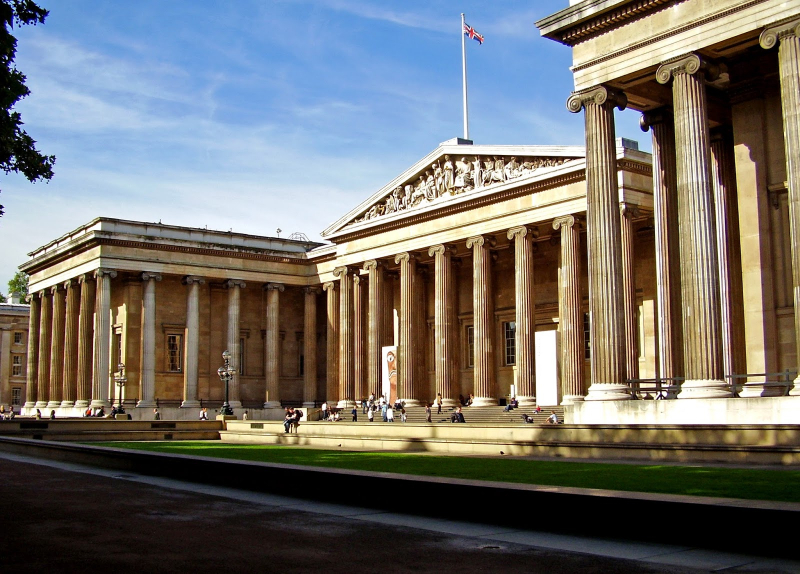
British Museum -
The Natural History Museum in London is a famous tourist and local destination. It contains a diverse collection of exhibits spanning a wide range of scientific and historical topics, ensuring that everyone may find something to their liking. Sir Hans Sloane surrendered his collection of roughly 70,000 objects to the British Crown in the mid-1700s, and the museum was born. The British Museum was created to store the objects, but by the 1850s, the collection had outgrown the area. The new building opened on April 18, 1881, after the museum's board of trustees organized a competition to design it. Until 1963, the natural history museum was a component of the British Museum.
The galleries of the museum are divided into four sections: red, green, blue, and orange. The Red Zone is devoted to Earth science and history. It is the site of the most complete Stegosaurus fossil yet unearthed. The fossil is approximately three meters in height and six meters in width. Rare minerals, rocks, and jewels can be found in the Earth's Treasury gallery. Learn about the impacts of water and weather on the Earth in the Restless Surface exhibition. A 3.5-million-year-old Laetoli canine, among many other fossils and artifacts, may be seen in the Human Evolution exhibit. A gallery dedicated to volcanoes and earthquakes is also available.
Location: Cromwell Road, London, England SW7 5BD
Website: nhm.ac.uk
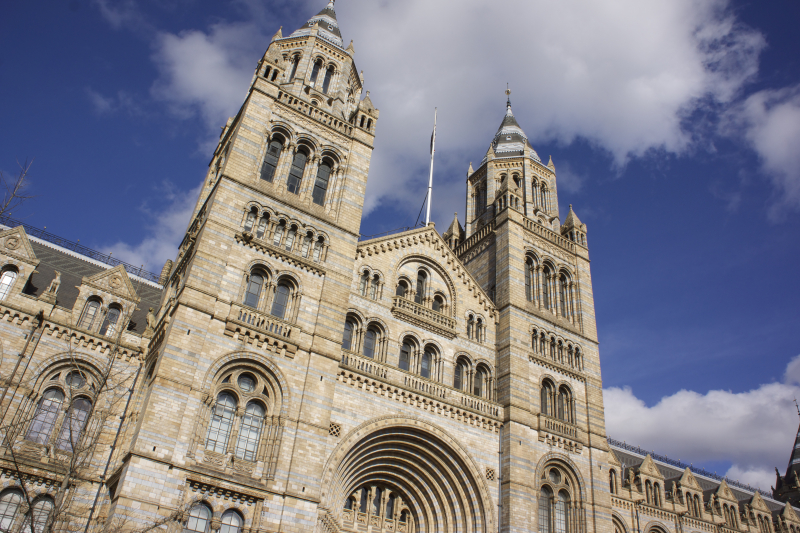
Natural History Museum 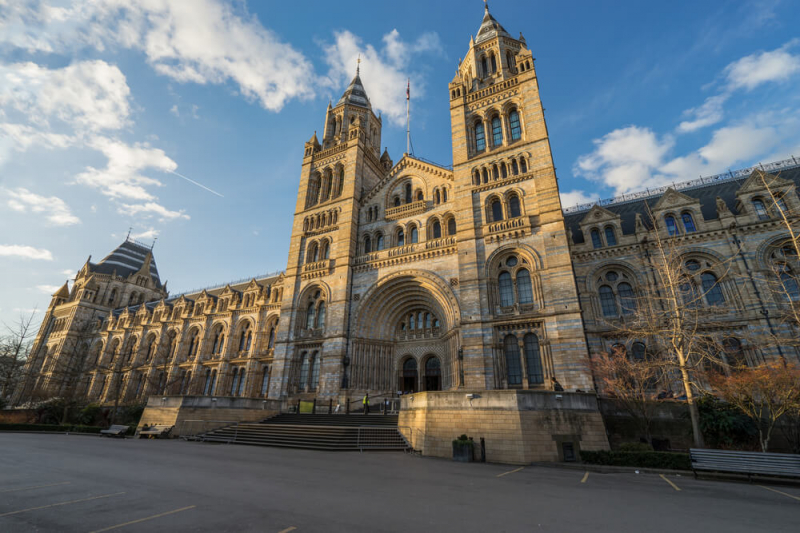
Natural History Museum -
The Victoria and Albert Museum in London, named after Queen Victoria and Prince Albert, was created in 1852. It is the world's biggest museum of decorative arts and design, with a permanent collection of 4.5 million artifacts. The V&A's collection encompasses 5,000 years of art, from antiquity to the present day, and is housed in 145 galleries. Textiles, costumes, glass, and pottery from Europe, North America, Asia, and North Africa are on display at the gallery.
The museum also has the world's greatest collection of post-classical sculpture, as well as the largest collection of Italian Renaissance art outside of Italy. The V&A is easily accessible from hotels because of its proximity to the South Kensington underground station, which serves the Circle, District, and Piccadilly lines. Walk north from the station through Old Brompton Road and Cromwell Place, turning right into Thurloe Place. Continue on Exhibition Road until you reach the museum on the left.
At the V&A, visitors may sample the museum's jewelry collection, which is one of the world's best and most extensive, with over 3,000 pieces. The glass collection is Europe's largest, and the metalwork area has approximately 45,000 pieces of ornamental metalwork, silver, and jewelry spanning from the Bronze Age to the current day. This comprises the national collection of English silver, as well as a variety of other intriguing objects.
Location: Cromwell Road, London, England SW7 2RL
Website: vam.ac.uk
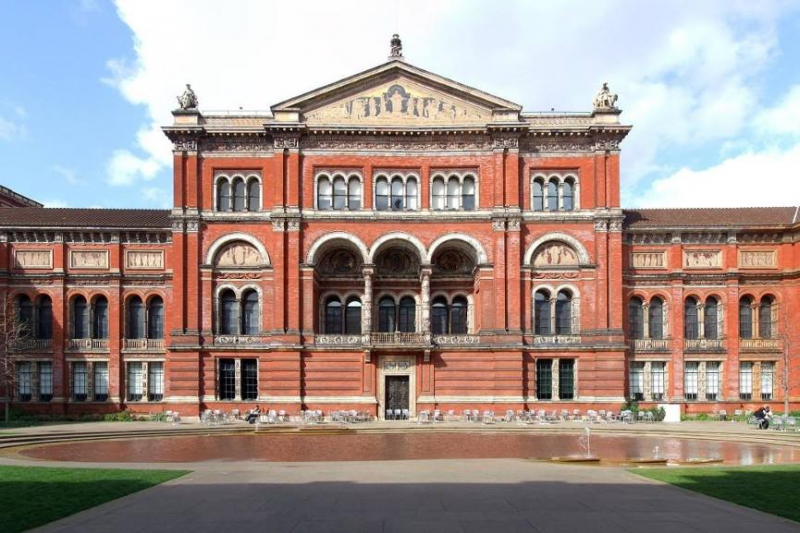
Victoria and Albert Museum 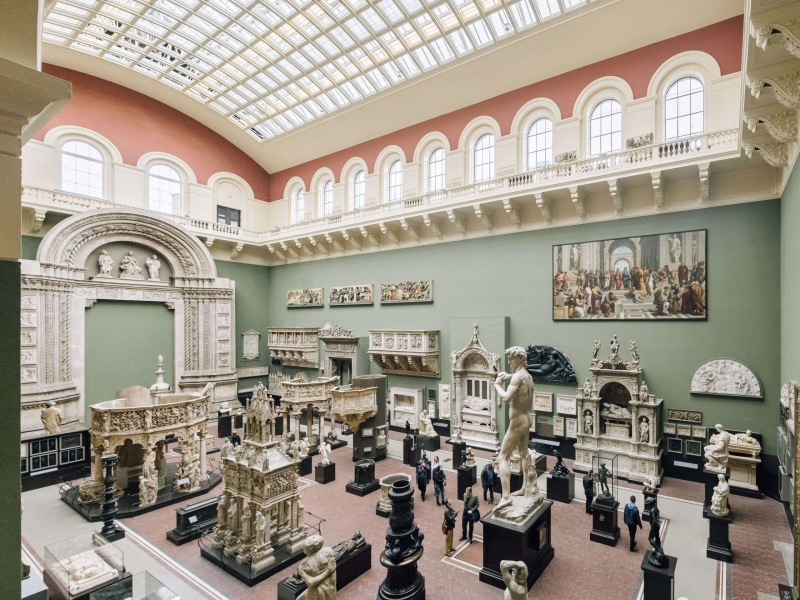
Victoria and Albert Museum -
The Science Museum is a significant museum in South Kensington, London, located on Exhibition Road. It was founded in 1857 and is now one of the city's most popular tourist destinations, with 3.3 million tourists each year. The Science Museum, like other publicly supported national museums in the UK, does not charge admission, however, visitors are encouraged to give a gift if they are able. Admission to temporary exhibitions may be charged. It is one of the Science Museum Group's five museums.
Palgrave Macmillan, a major academic publisher, released the official centennial history of the Science Museum on April 14, 2010. Science for the Nation: Perspectives on the History of the Science Museum is the first comprehensive history of the Science Museum since 1957. It is a collection of individual perspectives on various parts of the Science Museum's history by Science Museum personnel and external academic historians. The first five chapters trace the museum's history from the Brompton Boilers in the 1860s to the completion of the Wellcome Wing in 2000, albeit it is not a chronological history in the traditional sense. The next eight chapters deal with various aspects of the Museum's growth.
Location: Exhibition Road, London, England SW7 2
Website: sciencemuseum.org.uk
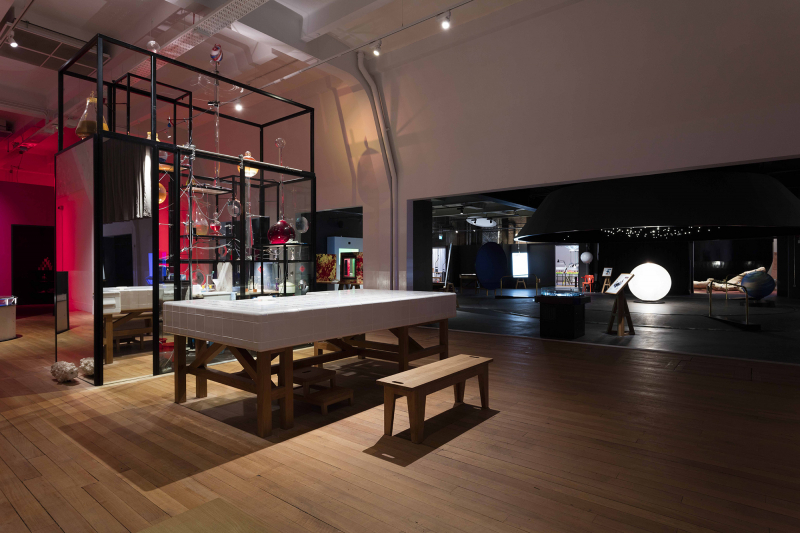
Science Museum 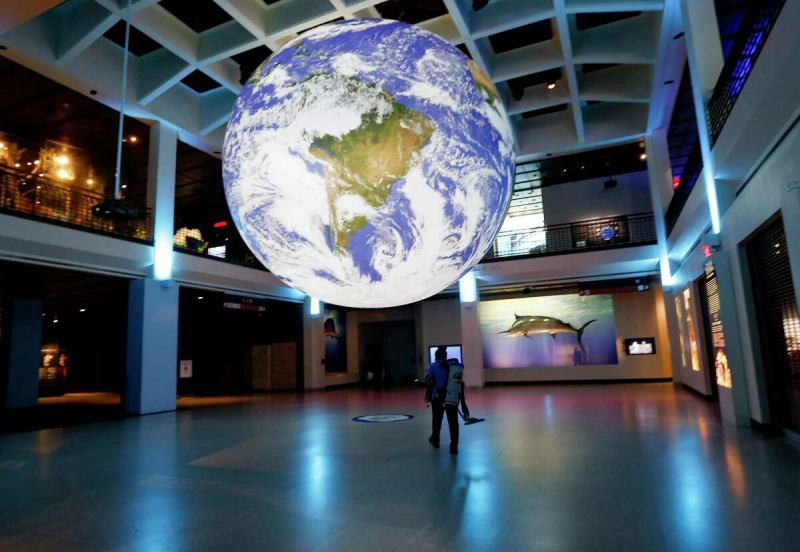
Science Museum -
Greenwich, London-based Royal Museums Greenwich is a collection of four museums. The Royal Museums Greenwich Foundation is a Private Limited Company by Guarantee without Share Capital, founded on March 22, 2012, with company number 08002287 and the 'Limited' exemption. Royal Museums Greenwich takes pleasure in publishing unique and engaging publications concerning its major subject areas, such as the sea, ships, time, and the stars. Whatever your passion, their publishing program will inspire and surprise you with anything from riveting tales of high seas adventure to the most profound secrets of the cosmos, little-known history to magnificent art.
This historic collection of locations features pioneering architecture, British art, and expedition stories. Large gala dinners and awards ceremonies, spectacular celebrations and parties, intimate private meals, and opulent weddings are all possible at the five diverse locations. Royal Museums Greenwich is conveniently placed in Zone 2, just a short distance from Canary Wharf and the City, with good DLR and mainline train station connections as well as riverboat services.
Location: National Maritime Museum, Greenwich, London SE10 9NF
Website: rmg.co.uk
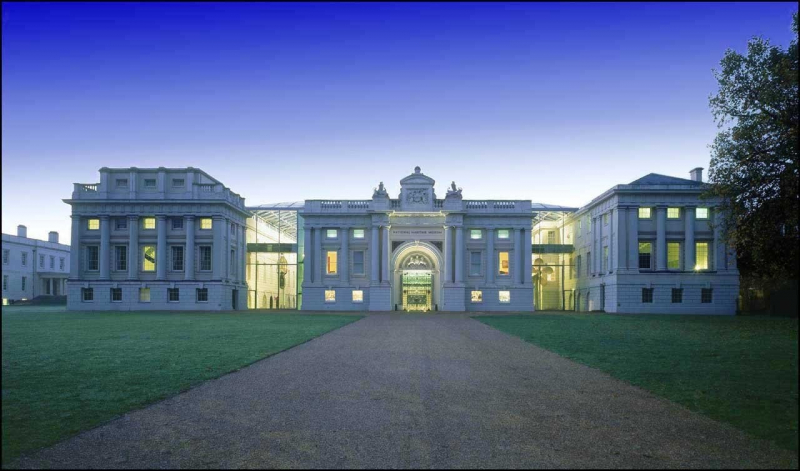
Royal Museums Greenwich 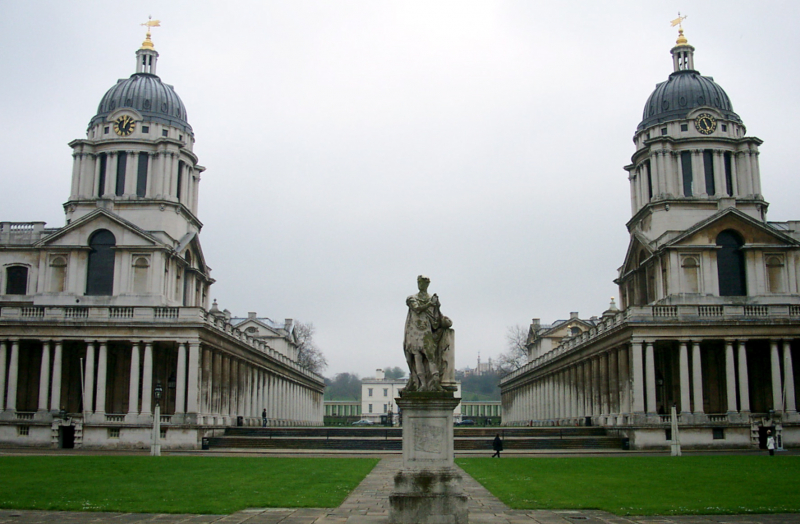
Royal Museums Greenwich -
Imperial War Museums (IWM) is a British national museum with branches in five locations across England, including three in London. The Imperial War Museum was established in 1917 with the goal of documenting the civic and military war effort and sacrifice of Britain and its Empire during World War I. Since 1914, the museum's scope has grown to encompass all conflicts in which British or Commonwealth forces have been involved. The museum's mission, as of 2012, is to "provide for and support the study and understanding of the history of contemporary conflict and wartime experience".
A substantial library, a large art collection, and specimens of military vehicles and aircraft, equipment, and other artefacts are among the museum's collections. Government subsidies, philanthropic donations, and commercial activities such as retailing, licensing, and publishing help to keep the museum afloat. General entrance to IWM London (though special exhibitions require a ticket) and IWM North is free, however, access to the other branches is charged. The museum is a non-departmental public organisation under the Department for Digital, Culture, Media, and Sport and an exempt charity under the Charities Act 1993. Sir Francis Richards is the Chairman of the Trustees as of January 2012.
Location: Lambeth Road, London, England SE1 7
Website: iwm.org.uk
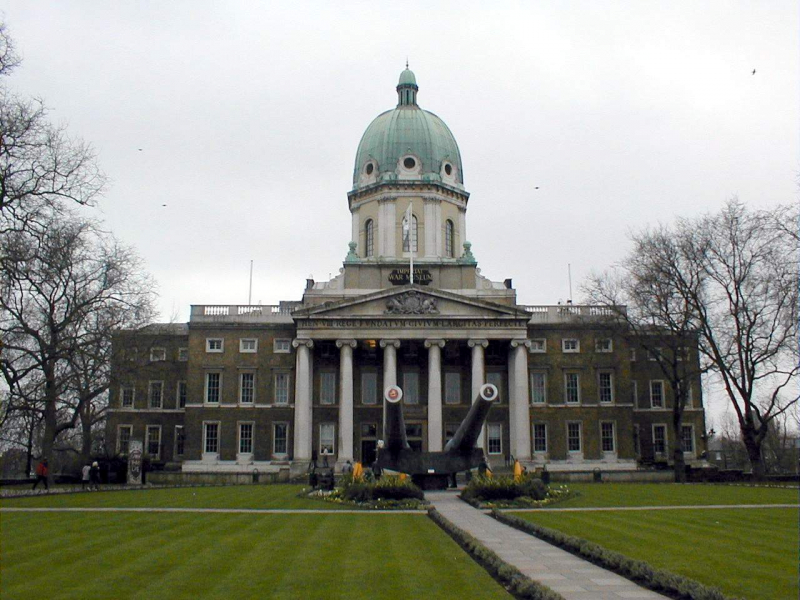
Imperial War Museum 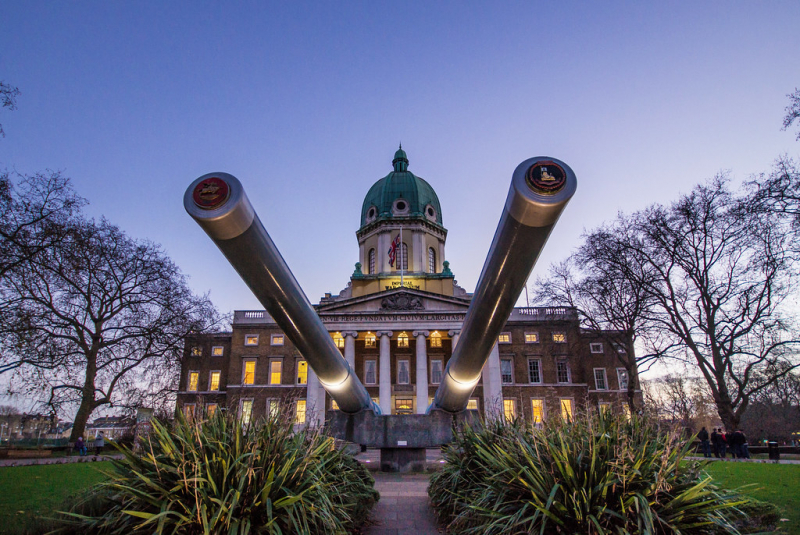
Imperial War Museum -
From prehistoric to present times, the Museum of London chronicles the history of the United Kingdom's capital city. It is part of the Barbican complex of buildings, which was built in the 1960s and 1970s to restore a bomb-damaged portion of the city and is positioned on the London Wall, near the Barbican Centre. With over six million pieces, the museum is the world's greatest urban history collection.
The museum lies a short walk north of St Paul's Cathedral, overlooking the remnants of the Roman city wall and on the outskirts of London's oldest neighborhood, which is now its financial center. It focuses on the social history of London and its residents throughout history. The City of London Corporation and the Greater London Authority share ownership and funding of the museum. The museum announced intentions to relocate from its Barbican location to Smithfield Market in March 2015. The move is predicated on collecting £70 million in funding.
Location: 150 London Wall, London, England EC2Y 5HN
Website: museumoflondon.org.uk
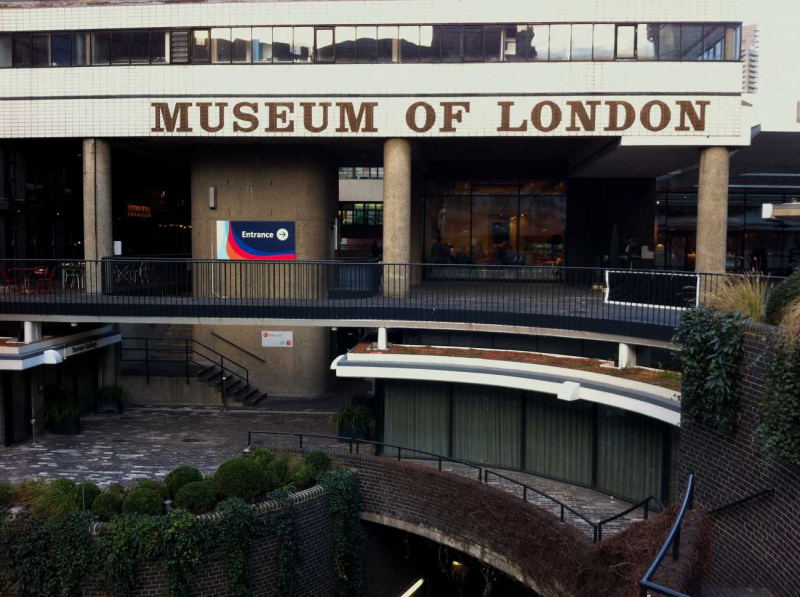
Museum of London 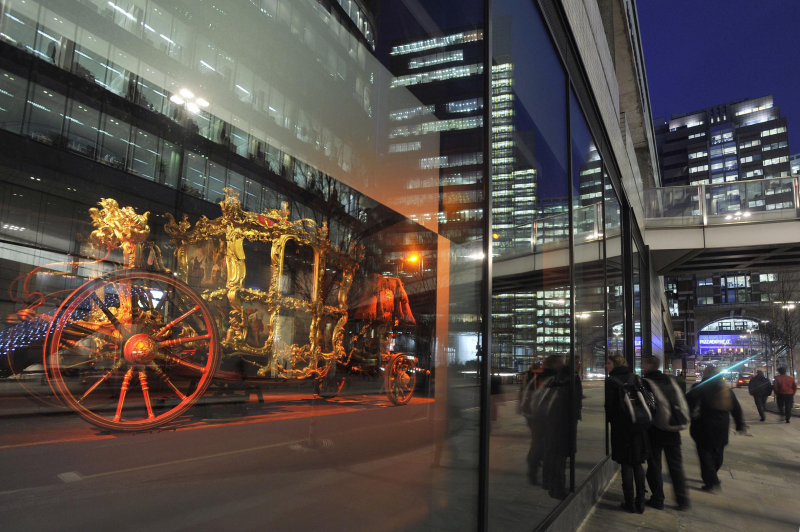
Museum of London -
The LTM (London Transport Museum) is a transport museum in Covent Garden, London. The museum primarily features exhibits linked to London's transportation legacy, as well as preserving and interpreting its history. The bulk of the museum's exhibits came from London Transport's collections, but with the founding of Transport for London (TfL) in 2000, the museum's scope has grown to include all elements of the city's transportation.
The museum is located at two locations in London. The main location in Covent Garden, which reopened in 2007 following a two-year renovation, bears the name of its parent institution and is available to the public every day. The London Transport Museum Depot, located in Acton, is primarily a storage location for historic objects that is available to the public on certain tourist days throughout the year. The museum was briefly renamed London's Transport Museum to highlight its coverage of issues other than London Transport, but it was renamed again in 2007 to coincide with the reopening of the Covent Garden location.
Location: Covent Garden, London, England WC2E 7BB
Website: ltmuseum.co.uk
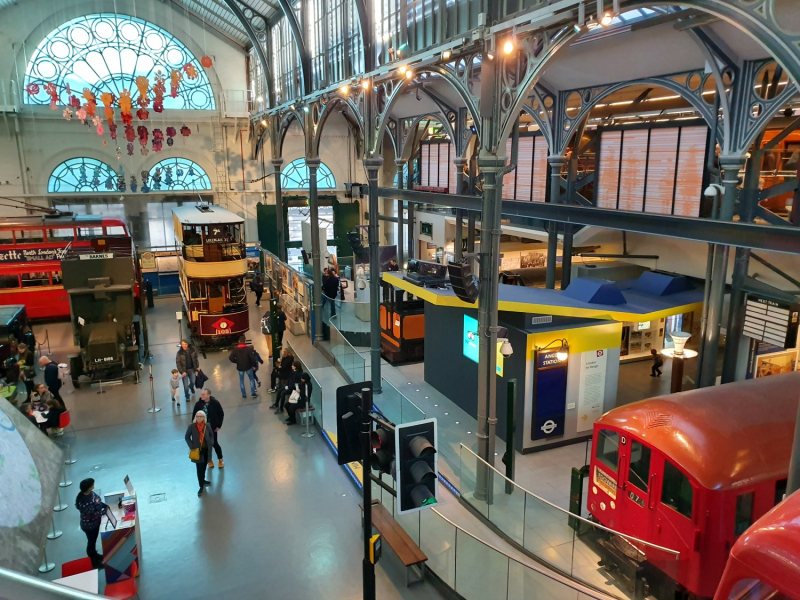
London Transport Museum 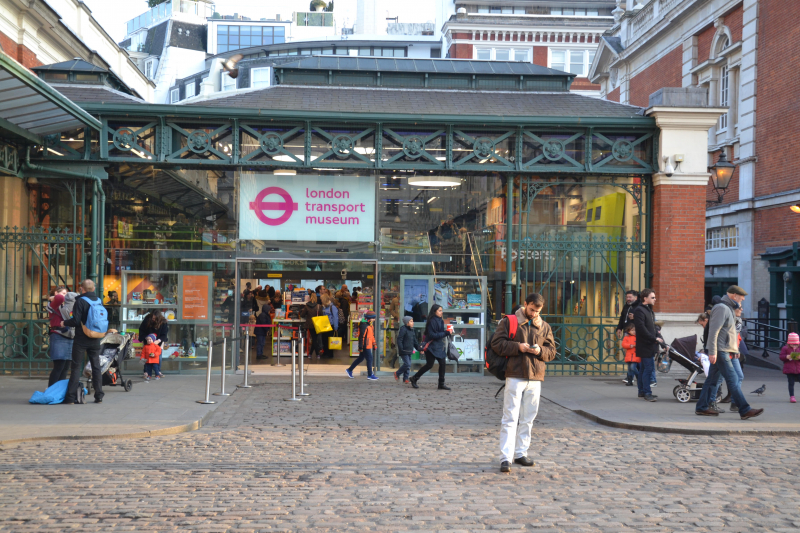
London Transport Museum -
Product, industrial, graphic, fashion, and architectural design are all on display at the Design Museum in Kensington, London. The museum was named European Museum of the Year in 2018. The museum is a nonprofit organization) the non-profit organization and all proceeds from ticket sales go into organizing new exhibitions. Sir Terence Conran founded the museum in 1989, with Stephen Bayley serving as the first CEO after the two men collaborated on the extremely successful exhibition space known as The Boilerhouse at the Victoria and Albert Museum (V&A).
Designer Maker User, a permanent exhibition showcasing essential pieces from the museum's collection, is housed on the top-floor area beneath the museum's roof. The upper level also houses a café, members' lounge, residency studio, and events and gallery space.
A design and architectural reference library on the first level is a valuable resource for students, educators, researchers, and designers. It will also contain archive documents relevant to the museum's history. A Design Studio, Creative Workshop, two lecture rooms, and a Common Room are part of the Swarovski Foundation Centre for Learning. The upper floor also houses the Design Museum's offices and main lobby, as well as a conference room and a video studio.Location: 224 Kensington High Street, London, England W8 6
Website: designmuseum.org
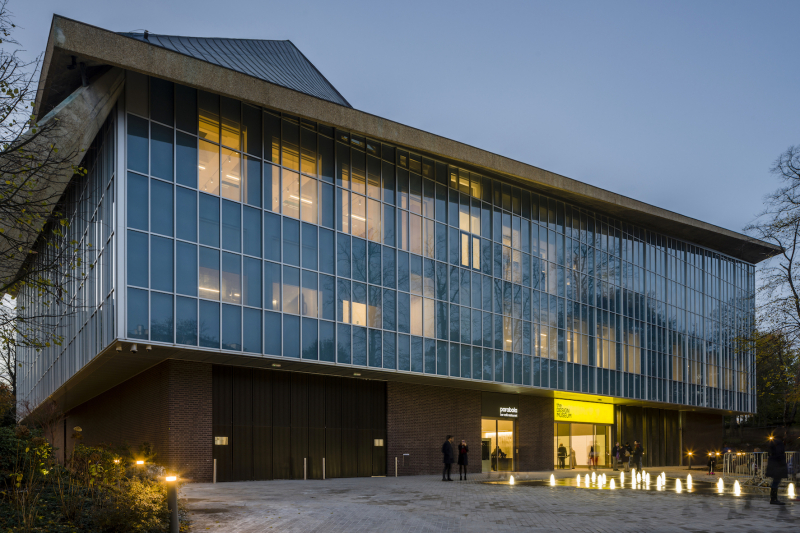
The Design Museum 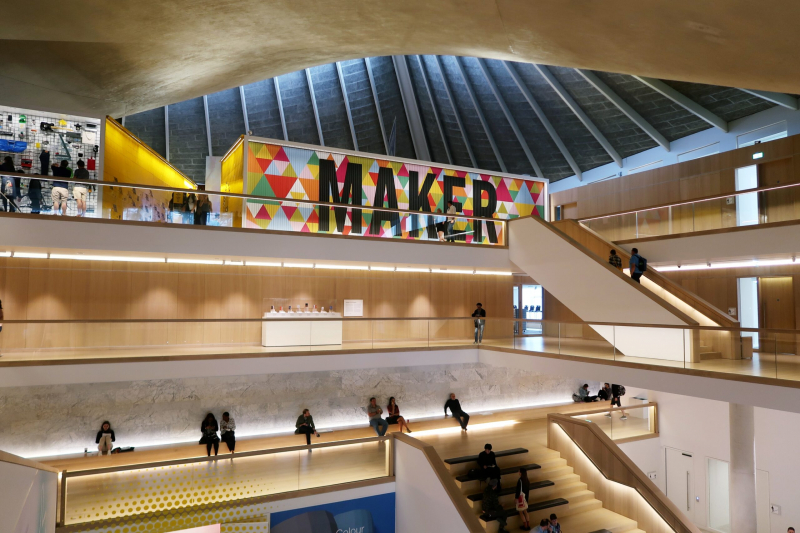
The Design Museum -
The Bank of England Museum, housed within the Bank of England in the City of London, houses a broad collection of artefacts relevant to the Bank's and the UK economy's history from its founding in 1694 to the current day. The museum is free and accessible to the public.
Archaeology, banknotes, coins, oil paintings, sculpture, antique furniture, ornamental art, and social history are among the nearly 40,000 pieces in the collection. The focus of the collection is on the Bank's function as the designer of Bank of England banknotes. Around 30,000 objects in the collection include banknotes and things linked to their design and manufacturing, with banknotes accounting for around 10,000 of these.
The Bank of England Museum is around 10,000 square feet (930 m2) in size and houses a diverse collection illustrating the Bank of England's history from its founding in 1694 to the present day. One of the exhibits' features is the chance to grasp a real bar of gold (99.79 percent pure gold) that may be handled from within its perspex cage. Every day, the gold bar's value is adjusted and shown alongside it.
Location: Threadneedle Street, London, England EC2R 8
Website: bankofengland.co.uk/museum
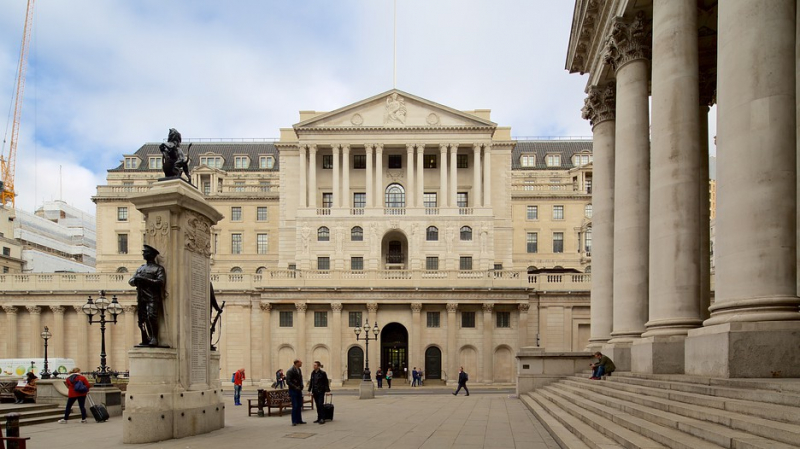
Bank of England Museum 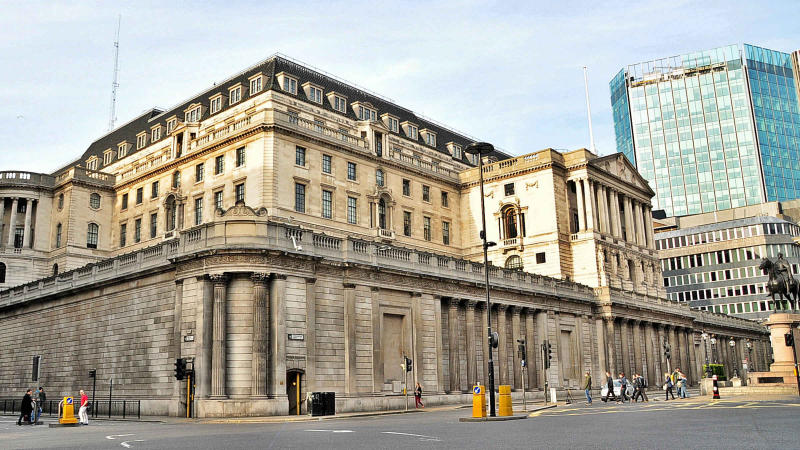
Bank of England Museum -
Tate Britain, formerly known as the National Gallery of British Art from 1897 to 1932 and the Tate Gallery from 1932 to 2000, is an art museum in London, England, located on Millbank in the City of Westminster. Tate Modern, Tate Liverpool, and Tate St Ives are all part of the Tate gallery network in England. It is the network's oldest gallery, having opened in 1897. It holds a significant collection of British art dating back to Tudor times, including extensive holdings of paintings by J. M. W. Turner, who gave his entire collection to the country. It is one of the country's major museums.
The gallery is located on Millbank, on the former Millbank Prison grounds. Construction began in 1893 under the direction of Higgs and Hill, and the National Gallery of British Art opened on July 21, 1897. However, it was known as the Tate Gallery from the beginning, after its founder Sir Henry Tate, and it formally adopted that name in 1932. Before 2000, the gallery held and presented both British and modern collections, but with the opening of Tate Modern, Tate's modern collections moved there, leaving the old Millbank gallery to focus on historical and contemporary British art. As a result, in March 2000, it was renamed Tate Britain.
Location: Millbank, London, England SW1P 4RG
Website: tate.org.uk/visit/tate-modern
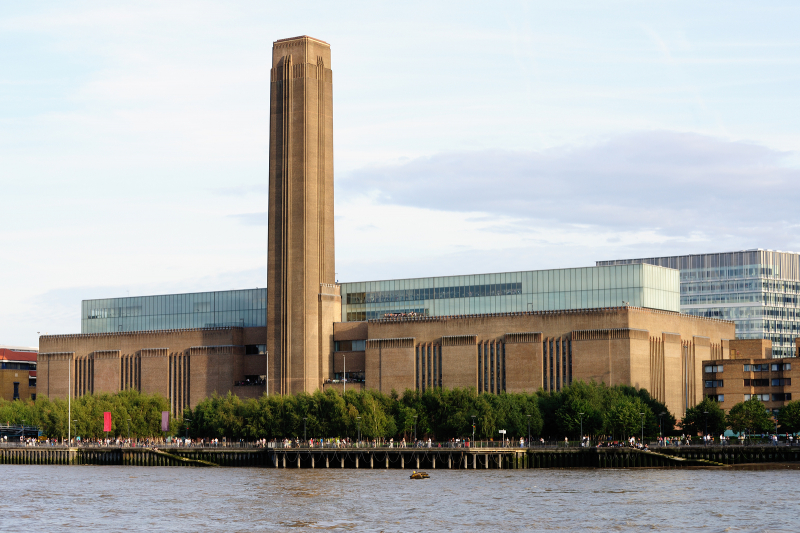
Tate Britain 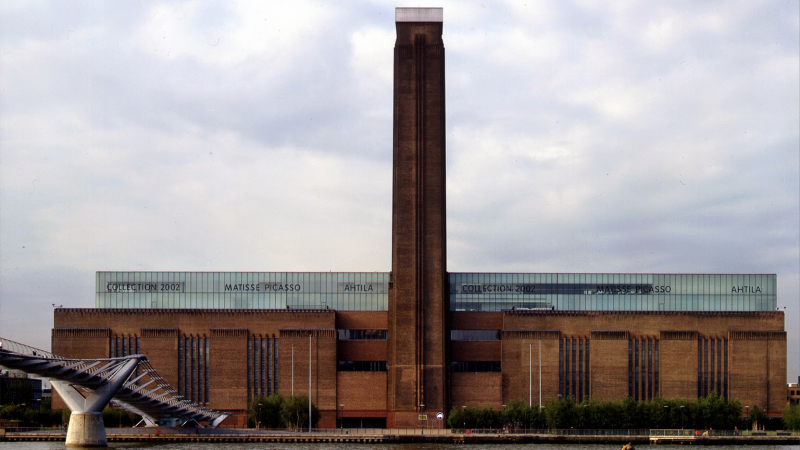
Tate Britain -
The Royal Academy of Music Museum in London is a museum of musical instruments and artefacts as well as a research center. The structure was created in 1822 as part of Regent's Park's main entrance and was an essential component of John Nash's Regency London architectural ideas. York Gate's interior was partly destroyed by bombing in the 1940s, but the Nash outside is a Grade 1 listed structure. The Academy was able to buy and remodel the building with the help of a Heritage Lottery Fund grant to accommodate studios, practice facilities, and a museum.
The Museum features three permanent galleries as well as rotating exhibits and displays. They include a wide range of eras, instruments, and themes, including stringed instruments dating back to the 16th century. The galleries serve as a showcase for the work of musicians, composers, instrument manufacturers, and researchers from a variety of musical and related fields.
Location: Marylebone Road, London, England NW1 5HT
Website: royalacademy.org.uk
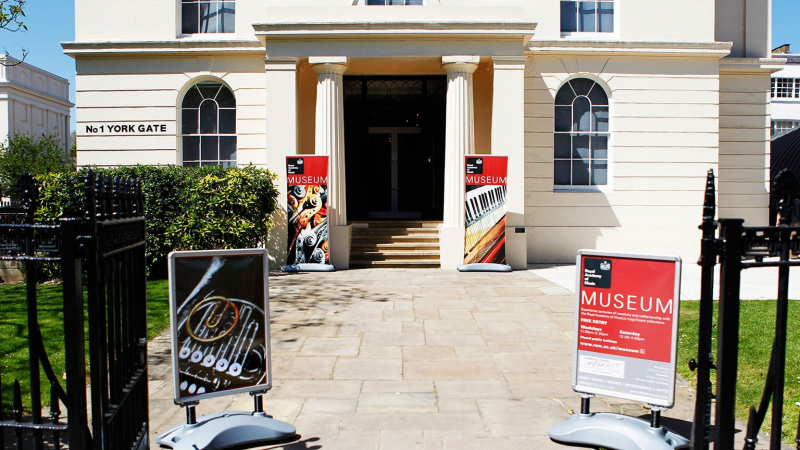
Royal Academy of Music Museum 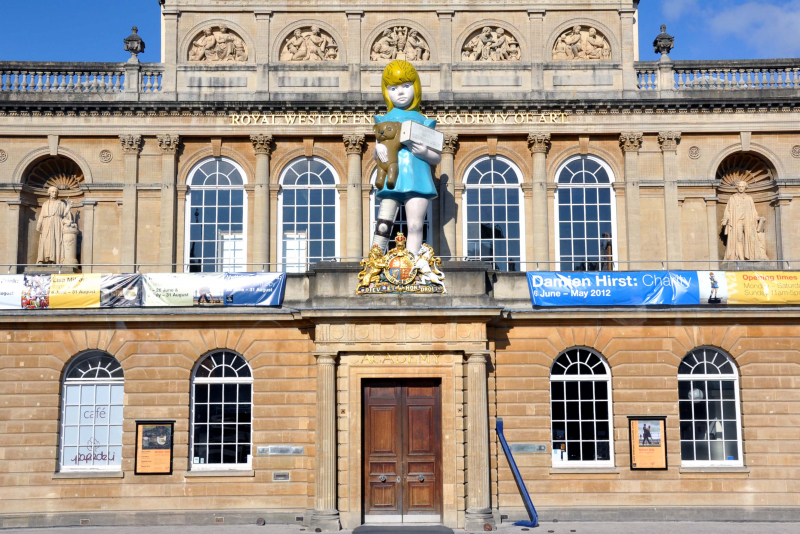
Royal Academy of Music Museum














